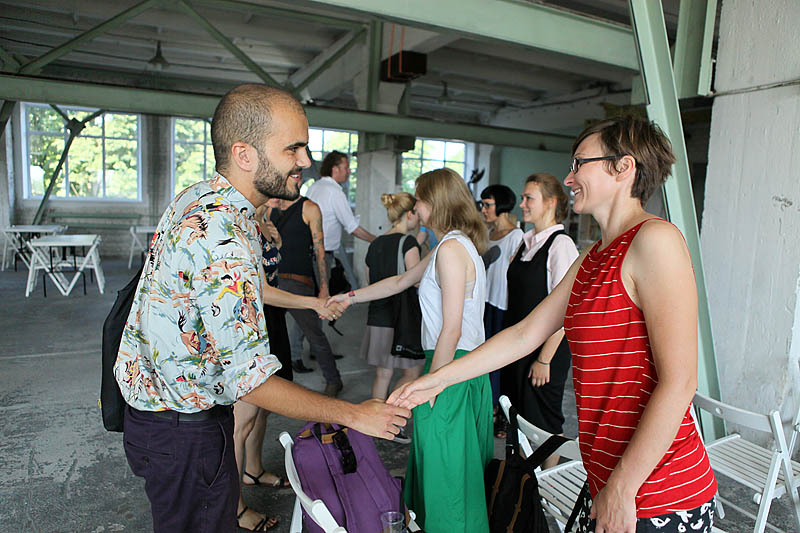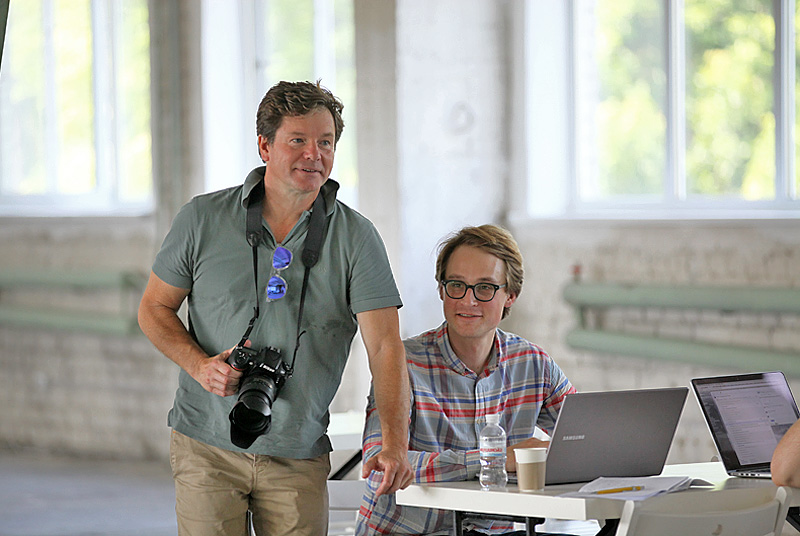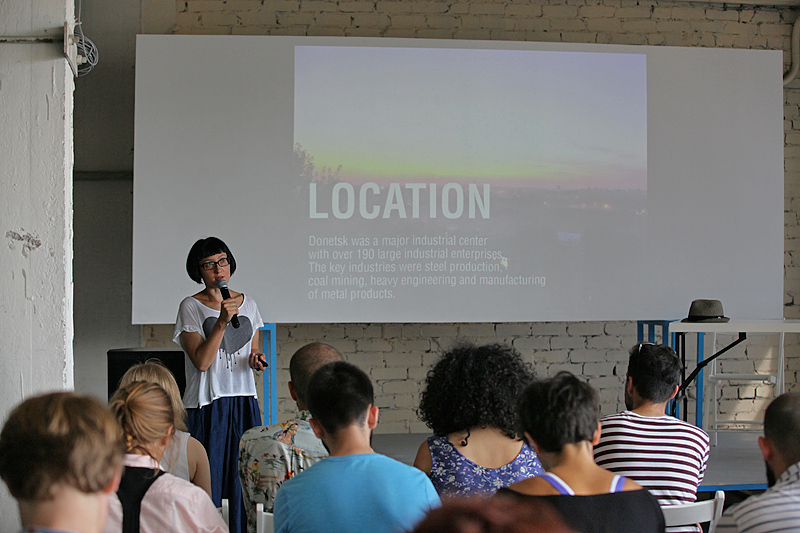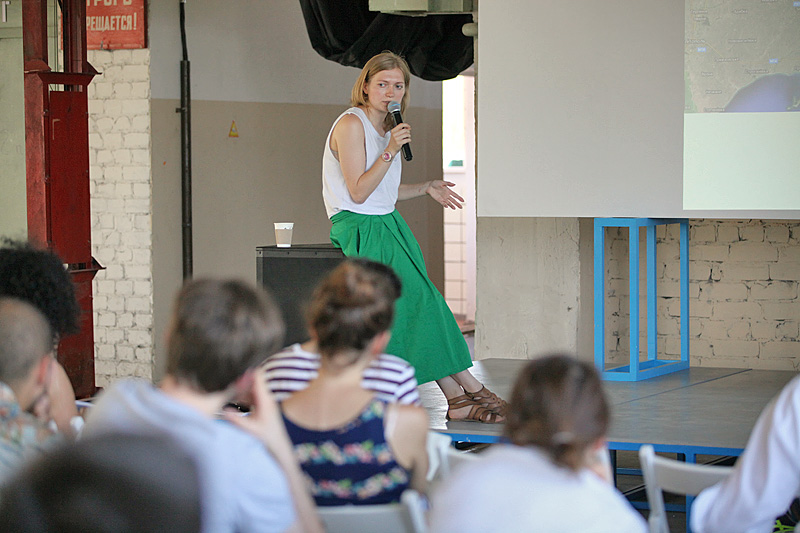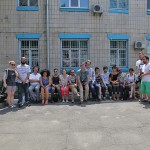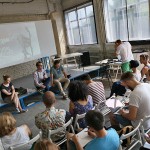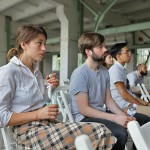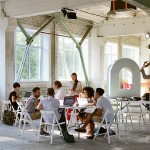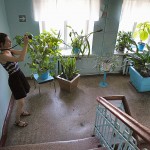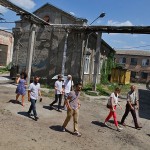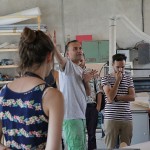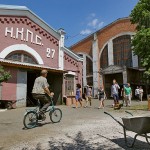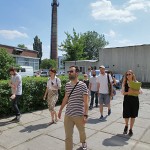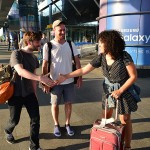July 7, can be memorised as the very first day of the Architecture Ukraine residency — all 13 project participants arrived to IZOLYATSIA.Platform for cultural initiatives (Kyiv) where they were introduced to the IZO team, met project curators Krists Ernstsons and Rick Rowbotham, and discussed the residency schedule and plans for the next two months.
The AU participants are: Anna Balázs (Hungary), Edurado Gimenez-Cassina Bergareche (Spain) and Liva Dudareva (Latvia), сolleсtiv wot tak (Anna Bajanova (Kyrgyzstan), Marta Dyachenko (Ukraine), Mitya Churikov (Ukraine), Eric Zapel (USA)), Robin Coenen (Germany) and Danielle Rosales (Germany), Svetlana Demchenko (USA), Francisco Lobo (Portugal) and Romea Muryn (Poland), Lucia Maffei (Italy), Justin Tyler Tate (USA), Fulco Treffers (The Netherlands). These participants were selected out of 45 applications and only 6 of them were from Ukraine, 4 from Ukrainians that live in other countries. Other applications included a wide geographical context from countries like Egypt, India, Brazil, USA and Jamaica.
“In modern world, 54% of people live in big cities, and our task is to learn how to live together” — said Rick Rowbotham during the welcoming speech that he gave together with Krists Ernstsons, again, stating the major goal of the residency — to develop “new ways of living in the XXI century”. Therefore the unimaginable military conflict that has emerged in Eastern Ukraine and has displaced people who have lost their homes, becomes a particularly important topic for the residency as we are looking for alternative ways of human interaction.
In this context, the idea of residences AU was not coincidental: Anya Medvedva, IZOLYATSIA’s communication director, revealed recent history of the foundation which was seized by terrorists of the so called “Donetsk People Republic” in June 2014. Since then, the foundation is based in Kyiv, but continues to focus its activities at the development and culture in the East of Ukraine.
Tomorrow morning AU residents will hit the road for their first trip to Mariupol — an industrial city in Eastern Ukraine which has been selected as a “the site” of the residency. With the beginning of Russian aggression this city has become one of the key spots of Russian-Ukrainian conflict. And since then the idea of its strategic significance — as the largest industrial and port city on the way from the Russian border to the Crimean peninsula (annexed by Russia in March 2014) is being widely broadcasted in the media. From mid-April to early June 2014, Mariupol was controlled by a terrorist group of “DPR”, and still, after the the city was liberated by Ukrainian troops on June 13, 2014 it remains the most vulnerable to political speculation.
Kateryna Yakovlenko, curator of Donbas Studies research project made a presentation about the history of the city, its social-political and cultural features (more on this read in the next entries!) and Rick Rowbotham added:
“We want you to go to Mariupol with an open mind. We will not tell you what to do and how. Instead, throw away all what is unnecessary and try to see the real core of the city”.
Well, the Architecture Ukraine residency has started! Although words “beginning” and “end” in projects such as AU have a rather symbolic meaning: in spite of the dates indicated in the calendar, what is the true beginning? The day when the selected artists come to Ukraine or the day when in different parts of the world they were reading an open call and typed “Mariupol” in Google?
“It’s amazing how fast things are going,” — said Krists Ernstons — “you are here, and there are eight weeks of ‘finding out’ ahead of us. Then a whole year when the project will be developed for the final exhibition in the summer of 2016”.
